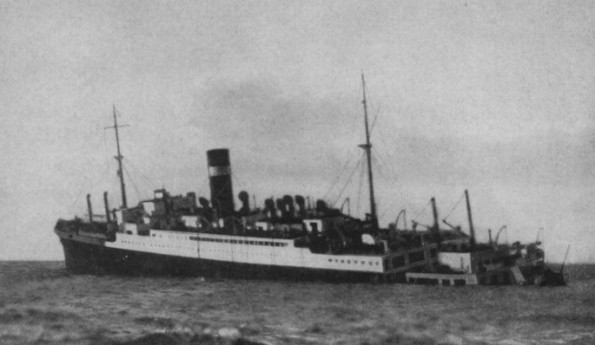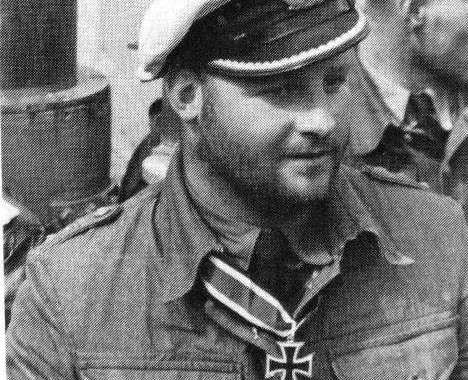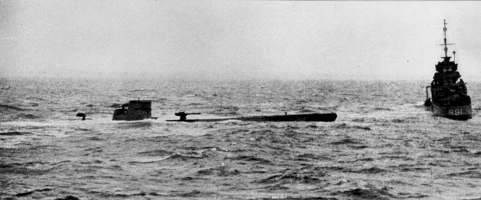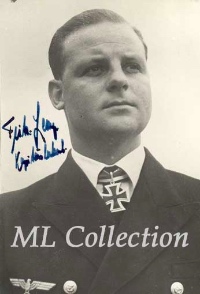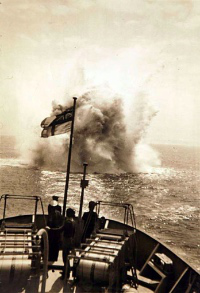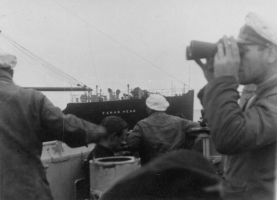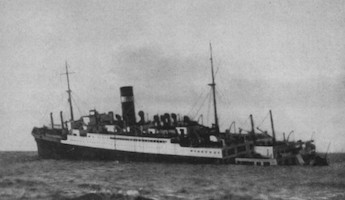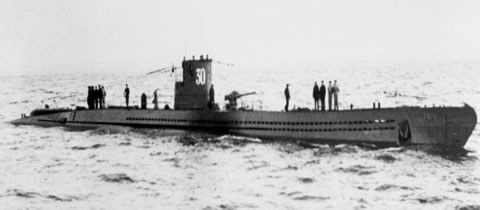It’s time to revisit one of my earlier blog posts about the number of torpedoes U-30 commander, Oberleutnant Fritz-Julius Lemp, launched at Athenia when he sank the British passenger ship on the first day of World War II. Various accounts of this action have Lemp firing two, three, or four torpedoes. Why the discrepancies? U-30’s war diary (log book) was altered. More about that later.
U-30 carried 11 torpedoes; one loaded in each of the four forward tubes, one in the aft tube and six in the forward torpedo room. Of those six torpedoes, four were stored under the decking while two were suspended in reload positions on the port and starboard side of the torpedo room. This meant that at least four bunks had to be stowed until two torpedoes were launched, which is why U-boat sailors who slept in the forward compartment always eagerly awaited their boat’s first action.
While it was not unusual for a U-boat to fire a fan of four torpedoes when attacking a convoy with a horizon filled with targets, it seems unlikely that Lemp would have expended more than a third of his boat’s torpedoes at a single target on his first attack run of the war. The most likely case is that he fired two torpedoes at Athenia. We know from nearly all accounts of the action that one of his initial shots was a misfire, described as either “running wild,” or being stuck in the U-boat’s torpedo tube.
Okay, it’s time now to address these discrepancies.
Lemp brought U-30 to the surface after nightfall to see how fast the ship was settling. While he was on the surface, Lemp learned he had torpedoed a passenger ship, exactly the kind of ship his operational orders told him he could not attack. He made the decision to leave the scene without reporting his actions to his headquarters. Because of this decision, the German Navy was caught off guard the next day when British media began reporting the Nazis had torpedoed a passenger ship and killed innocent civilians. To save face, the Navy responded that a U-boat could not have been responsible because none had reported any action in the area where Athenia had been sunk, conveniently leaving out the fact that they had not heard from all the U-boats that had been deployed.
Even after Oberleutnant Lemp returned to his base and immediately reported his mistake, German High Command continued to deny responsibility. They stuck to this story throughout the war, and made the decision to alter the first two pages of U-30’s war diary to show the boat had been more than a hundred miles from the scene on the night Athenia was attacked. In doing so, the only contemporaneous account of the attack was lost. Twenty months later, Kapitanleutnant Lemp died when is U-boat was damaged by depth charges and had to be abandoned.
It wasn’t until the Nuremburg Trials in 1946 that Germany admitted its role in Athenia’s sinking. By then, the carnage of World War II seemed to overwhelm any interest in the details of the attack that had begun the Battle of the Atlantic.


